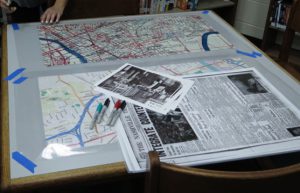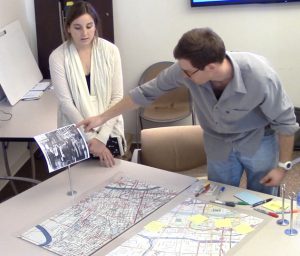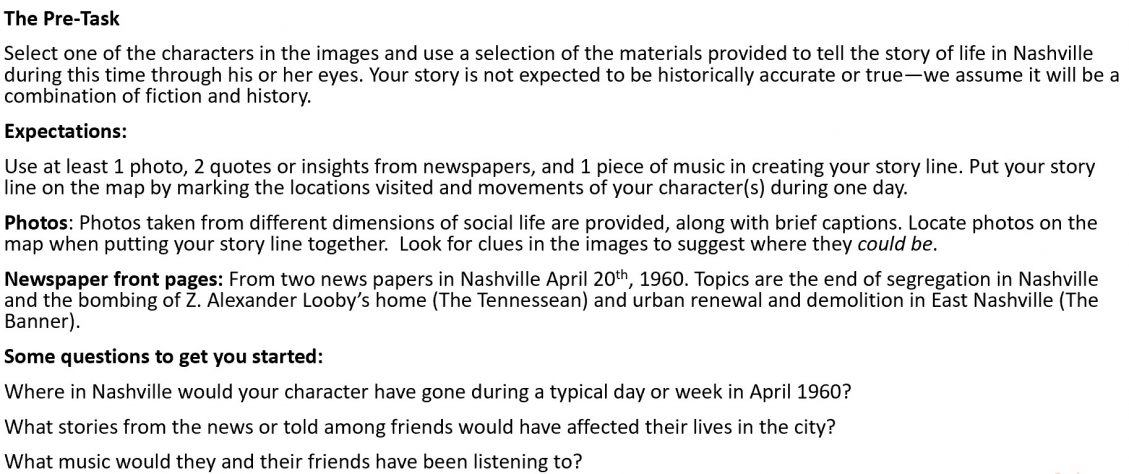Listening Session
Setting: Classroom space (or somewhere music can be played aloud)
Estimated time: 45 minutes
Resources needed: Access to speaker system, music player e.g. Spotify, iTunes, copies of lyrics (paper or digital), writing materials, post-it notes
Organization: Participants work in small groups (between 3 and 6 people) seated at the same table
Purpose: Provide musical contextualizing information about the time period, themes and location which will be the focus for the DSSL activities
Activity structure: Facilitators select a song which they feel is rich in terms of the musical or lyrical content as it relates to the context of the DSSL theme. Initial discussion might involve asking participants if they are familiar with the song or artist. Play the entire song through once.
Participants are then divided into small groups and given a theme to listen for: physical space; lyrics; music or melody; and feeling or emotion. Groups are provided with copies of the lyrics and post-it notes to make notes and annotations related to their theme. The song is played again and then groups have around 15 minutes to collect their ideas together.
Facilitator asks each group to feedback their response to what they heard related to their theme. It is useful to have someone to scribe ideas on flipchart paper that can be kept for use later in the project.
Example: At the beginning of a project to build DSSLs around the theme of the Civil Rights movement and social activism in Nashville, facilitators chose the song ‘Eyes on the Prize’ by Mavis Staples. This song was chosen as the lyrics reference the organizing role of religion in social activism and the song became popular during the Civil Rights movement of the 1950’s and 1960’s.
Participants in the listening session had access to partially annotated lyrics hosted on genius.com. The lyrics can be found here.
Day in the Life task


Setting: Classroom or archive space e.g. library
Estimated time: 90 minutes
Resources needed: Writing materials including Sharpies, post-it notes, base maps of research area, acetate cut to the size of the maps, newspaper front pages from different publications published on the same day, three photographic images featuring people, menu stands (optional)
Organization: Participants work in small groups (between 3 and 6) seated at the same table, all resources provided on tables
Purpose: Set the historical context of the DSSL activities; allow facilitators to assess the historical knowledge and understanding of participants; familiarize participants with the task of using maps and media to tell historical fiction.
Activity structure: Facilitators set up the classroom space with all resources on tables. Go through activity prompt with participants (see next page for example). Groups are given around 25 minutes to review the materials and select a character(s) for their Day in the Life story. You may chose to stop participants after an initial 10 minutes to share early ideas. It is important to stress that you are not expecting the stories to be historically accurate – participants should not worry about names, dates and locations. They are aiming to tell a story which is plausible, a form of historical fiction. Groups add notes and path to their base map by drawing onto the acetate.
Depending on how many groups you have, they can either share their stories with the whole class when finished or teams can pair up and feedback to each other.
Below is an example of the pre-task instructions used to introduce the context of the Civil Rights Movement in Nashville during the 1960’s.
